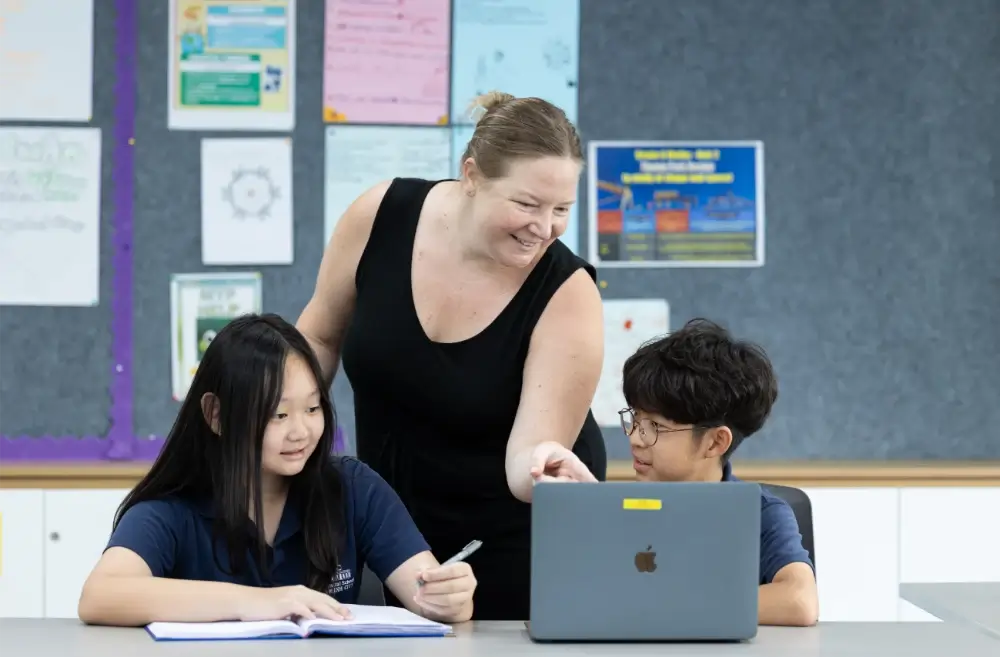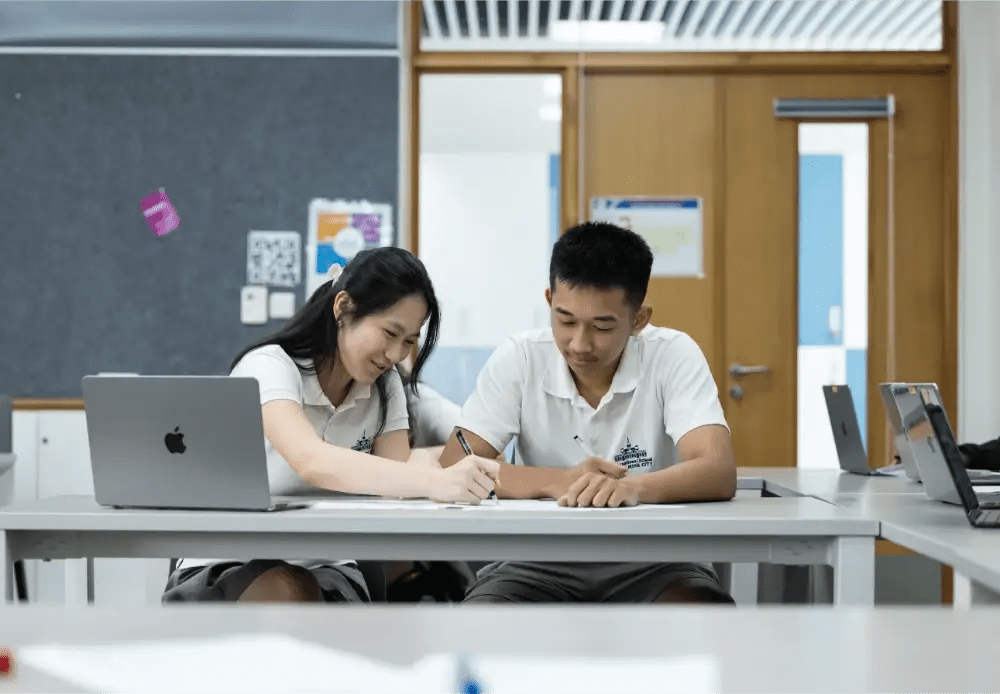Strategies for Academic Success: How Notetaking Can Build Strong Learning Habits
At ISHCMC, we are committed to helping every student reach their potential through rigorous academics, personalised support, and strategies that build skills for life. One powerful example is the Cornell note-taking method, a simple but effective way to help students understand, remember, and apply what they learn.
In a Secondary classroom, you might see students dividing their page into three sections: a narrow column on the left for key words or questions, a wide column on the right for main ideas in their own words, and a summary box at the bottom. It’s a small change to how students take notes, but it has a big impact on how they learn.
Why Cornell Notes Matter for ISHCMC Students
Cornell Notes directly support our vision of academic excellence and holistic education. This method:
- Encourages active thinking during lessons, keeping students engaged and curious.
- Builds organisation and clarity, making revision easier and more effective.
- Supports academic English by helping students summarise ideas concisely in their own words.
These benefits align with our definition of High Quality Teaching and Learning principles: challenge, inquiry, belonging, and agency. They also complement our ISHCMC values: curiosity (asking meaningful questions), achievement (improved results), and resilience (developing strong habits).

Current Research on the Cornell Method
Recent studies confirm that Cornell Notes continue to be a high-impact learning strategy:
- 2025: In Vietnam, 11th-grade students using Cornell Notes for reading tasks achieved significantly higher comprehension scores than those using traditional note-taking (Dang & Pham, 2025).
- 2023: Nursing students trained in the method produced higher-quality notes and achieved better quiz results than their peers (Amhout et al., 2023).
- 2024: U.S. schools reported that Cornell Notes helped students make deeper connections between classroom learning and assessment tasks by encouraging active processing of information (NPS Schools, 2024).
These findings reinforce earlier research showing that students who take notes in their own words and review them regularly have better long-term retention and deeper understanding (Kobayashi, 2006; Mueller & Oppenheimer, 2014).
What It Looks Like in Class

As ISHCMC offers the full IB continuum (PYP, MYP, DP) and three high school pathways, note taking strategies like Cornell Notes can be found across grade levels and subjects:
- Science: Cue: “How do enzymes work?” → Notes: diagram + explanation → Summary: “Enzymes speed up reactions by lowering activation energy…”
- Humanities: Cue: “Why do revolutions happen?” → Notes: causes and examples → Summary: linking causes to outcomes.
- Mathematics: Cue: “When to use the quadratic formula” → Notes: steps and examples → Summary: rule for applying the formula.
- Language & Literature: Cue: “Identify imagery in the poem” → Notes: quotations and meanings → Summary: how imagery supports the theme.
Our highly qualified teachers, 65% holding a master’s degree and averaging nine years’ experience, embed these techniques into lessons so that every student, including those developing English, can access and succeed in learning.
How Parents Can Help
At home, you can reinforce this strategy or other note taking strategies with three simple steps:
- Ask your child to explain their in their words.
- Before a test, ask them to review notes and explain key concepts to you.
- Encourage short, regular review sessions rather than last-minute cramming.
Other Ways ISHCMC Students Take Notes
While the Cornell method is a proven method, it is not the only way our students organise their learning. Some prefer mind mapping, using diagrams to connect key ideas and show relationships between concepts. Others use the outline method, arranging information in bullet points under main headings, or charting, where they create tables to compare and contrast information.
What matters most is that students choose a method that works for them and use it consistently. Developing a reliable note-taking strategy helps them process ideas more deeply, revise efficiently, and feel confident when assessments come around. At ISHCMC, our teachers introduce different approaches so every student can build the habits and skills that best support their own success.

A Small Habit With Big Results
Cornell Notes are more than just a way of organising a page. They help students listen with focus, question thoughtfully, and express ideas clearly. At ISHCMC, this means:
- Better preparation for assessments like MAP, where our students consistently outperform US norms in Math, Reading, and Language Usage across Grades 3 – 10.
- Stronger results in the IB Diploma, where our inclusive average score of 34 (39 if selective) outpaces the global average of 30.
- Greater confidence in communicating ideas, an essential skill for university and life.
It’s a small habit, but one that reflects our belief in rigorous, personalised learning supported by a caring, inclusive community. At ISHCMC, strategies like notetaking help our students not only achieve academically but also develop the skills, resilience, and independence to lead in a global future.







